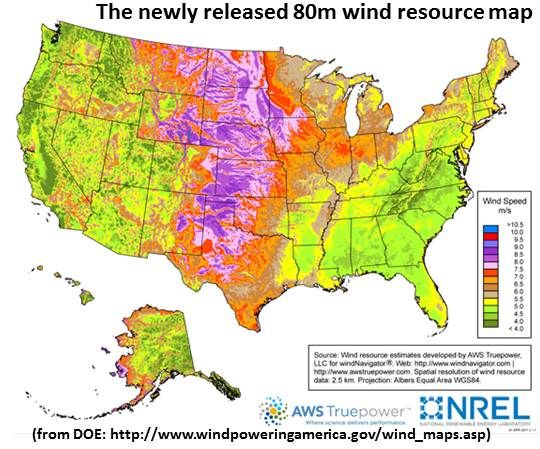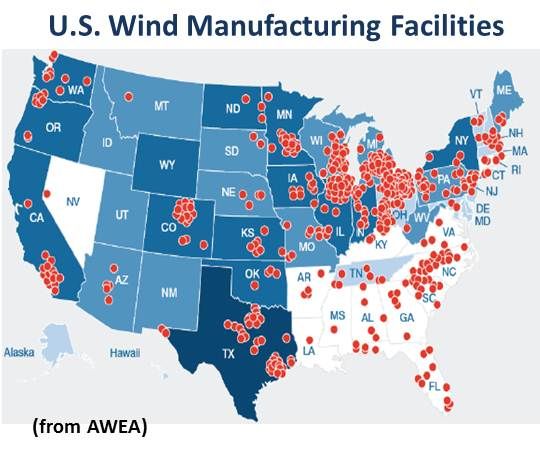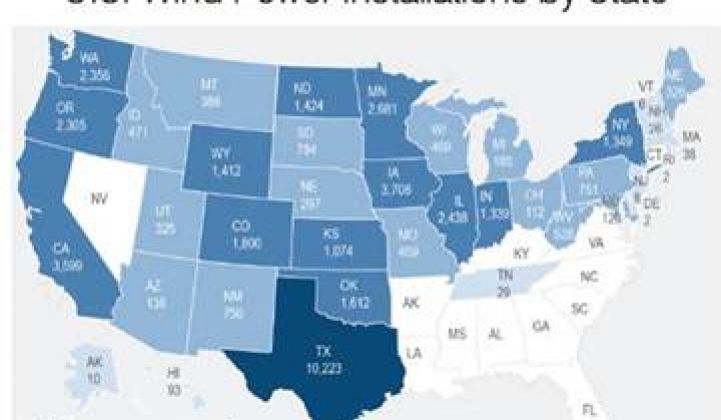The U.S. has nearly 45,000 megawatts of installed wind capacity.
There is a total installed capacity of 29 megawatts in the southern block of states of Arkansas, Louisiana, Mississippi, Alabama, Tennessee, Kentucky, Florida, Georgia, South Carolina, North Carolina and Virginia.
There is a reason the American Wind Energy Association (AWEA) is holding its 2012 conference in Atlanta, Georgia this year, according to Southern Alliance for Clean Energy (SACE) Renewable Energy Manager Simon Mahan. The combination of newly identified, as-yet-unexploited resources, new technologies that make exploiting them economically feasible and a growing demand for electricity make the region a new frontier for developers.
Southerners are, Mahan said, among the biggest electricity devourers in the nation. The average home in the region, he said, “uses something well north of 14,000 kilowatt-hours a year, primarily because we run our air conditioners a lot.”
In electricity consumption, he explained, “after you get past the top five, you find Georgia, South Carolina, and North Carolina very high on the list. Florida is the third or fourth highest. And Texas is the biggest. On the East Coast, we represent four out of the top five electricity markets, with New York.”

Southern utilities are hungry for capacity. Older conventional generation units are going offline and utilities must face the regulatory rigors and prohibitively high costs of building new coal or new nuclear -- or consider the energy diversification that new wind capacity offers. Only new natural gas plants are competitively priced.
Mahan described projects that have engaged South Carolina’s Santee Cooper, Georgia’s Southern Company and North Carolina’s Duke Energy (which, when it merges with competitor Progress Energy, will be the biggest utility in the nation).
“If they weren’t genuinely interested, they would just put out a white paper saying it’s too expensive, it’s not viable,” Mahan said. Whether their involvement will lead wind development, Mahan said, still isn’t clear. “They’re taking baby steps, which is a necessary economic caution for them,” he noted. But that’s “better than not doing anything.”
Wind’s emerging competitiveness is the result of several factors, Mahan explained.
The South’s resources, measured in the 1980s at a height of 50 meters, were once thought inadequate to economic development, but new turbine technology makes it possible to exploit winds at 100-meter heights.
“Let me give you three pieces of information,” Mahan said. “The first is anecdotal. Airplanes face headwinds of 120 miles per hour because high up, wind speed is much greater.”
“The second,” he said, “is the wind-power law that says the higher you go, the better the wind speed. There is an actual equation. That’s what the National Renewable Energy Lab [NREL] has done with its most recent wind resource assessment map.”

Just published at the DOE website, new NREL data assesses winds across the U.S. at 80-meter heights and allows detailed extrapolations at 100-meter heights. The detailed data shows pockets of potential in many southern states, especially in the mountains and along the coasts. “Potential resources for wind farms are popping up that folks just didn’t realize existed,” Mahan said, “and they’re starting to test them out.”
Developers are moving on the South now because the taller turbines are also technologically more advanced. Advanced blades, drivetrains and power electronics all make feasible the harvesting of the South’s lower speed winds.
“The third piece of information,” Mahan said, “is that private developers are putting up their own anemometers.” In pursuit of the one to two years of actual, on the ground day-to-day data required by the loan institutions that back them, developers are verifying the NREL assessments.
Mahan’s SACE and Wind Working Groups in several states are laying the ground work to wind public approval. “We pride ourselves on our stakeholder engagement and public outreach,” he explained.
Developers like Iberdrola, Invenergy and Wind Capital Group are engaging communities in North Carolina, South Carolina, Kentucky and Florida with proposed projects totaling over 1,400 megawatts. “If a developer comes into a community that is not prepared,” Mahan said, “there can be a 'public backlash.'" SACE and its allies, he said, bring “third-party information so communities are primed and ready for when developers show up.”
TVA’s 1,565 megawatts of power purchase agreements (PPAs) for Midwestern wind and Southern Company subsidiary Alabama Power’s recent PPA for Oklahoma wind both underscore the business sense in fledgling HVDC mega-capacity transmission projects planned by Clean Line (seven gigawatts) and Pattern Energy (three gigawatts) that will by mid-decade deliver Texas and Midwestern winds to southern utilities.
Maybe the biggest part of the equation, Mahan said, “is that we’ve already got businesses here providing goods and services to the wind industry domestically and internationally.” Siemens, ZF Gearboxes, ABB and GE are among the many big names building in the South. “We’ve got turbine and blade manufacturers, nacelle assemblers, ship builders, foundation builders, monopole steel companies and a lot of service companies for avian monitoring, for lighting, for the wires.” It is, Mahan said, “a full suite of economic opportunities for us.”
The obvious next question, Mahan said, is, “’We build the stuff here; why can’t we just go ahead and install it here?’”




